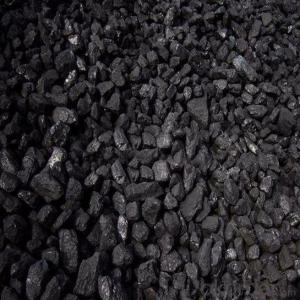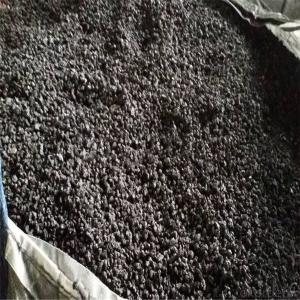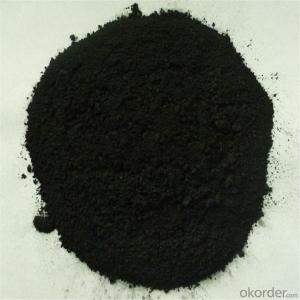Graphite powder Graphite Recarburizer High Carbon Low Sulphur For Metals Casting
- Loading Port:
- Dalian
- Payment Terms:
- TT OR LC
- Min Order Qty:
- 10 m.t
- Supply Capability:
- 500000 m.t/month
OKorder Service Pledge
OKorder Financial Service
You Might Also Like
Specifications of graphite powder:
- 98%-99% graphite powder
- high fixed carbon
- low sulphur and nitrogen
- ten year experience in processing of graphite products
- Graphite powder / Graphite carburant
Graphite powder purposes:
- As non-metallic mineral resources, has important defense strategic role
- Can be used for high and new technical projects, is of great economic and social benefits
- Is the metallurgical industry refractory material
- Is the chemical industry all kinds of corrosion of vessels, general equipment of carbon products
- Light industry is in pencil, ink and the main raw material of artificial diamond
- Is the electrical industry production carbon electrode and electrode carbon rods, battery materials
Graphite powder data sheet:
Our carbon additive has the features of high carbon, low sulphur, nitrogen and harmful impurities. So it has been widely used for steel-smelting, casting, brake pedal and friction material. | |||||||
Data sheet | |||||||
Product No. | Fixed Carbon | Sulphur | Ash | Volatile Matter | Moisture | Particle Size | Nitrogen Content |
Min | Max | Max | Max | Max | 90% | Max | |
HY-CA-01 | 98.5% | 0.50% | 0.80% | 0.80% | 0.50% | 1-5MM | N/A |
HY-CA-02 | 99.00% | 0.30% | 0.50% | 0.50% | 0.50% | 1-5MM | 100PPM |
HY-CA-03 | 98.50% | 0.05% | 0.80% | 0.70% | 0.50% | 0.3-5MM | 300PPM |
HY-CA-04 | 95.00% | 0.30% | 3.50% | 1.50% | 0.50% | 1-4MM | 700PPM |
HY-CA-05 | 99.00% | 0.03% | 0.50% | 0.50% | 0.50% | 0.3-5MM | 300PPM |
HY-CA-06 | 80.00% | 0.10% | 16.50% | 3.50% | 2.00% | 1-5MM | N/A |
Remark:The above mentioned grain sizes are recommended standard, if your have special requirements, please feel free to contact us. | |||||||

- Q:How does carbon impact the melting of polar ice caps?
- Carbon impacts the melting of polar ice caps primarily through climate change. Carbon dioxide (CO2) is a greenhouse gas that traps heat in the atmosphere, causing the Earth's temperature to rise. This increase in temperature leads to the melting of polar ice caps. When carbon is released into the atmosphere through human activities such as burning fossil fuels, deforestation, and industrial processes, it accumulates and contributes to the greenhouse effect. As the concentration of CO2 increases, more heat is trapped, resulting in the warming of the planet. Polar ice caps, especially in the Arctic and Antarctica, are particularly vulnerable to this warming. The melting of the ice caps is accelerated by rising temperatures, causing them to shrink and eventually collapse. This process is known as ice cap retreat. The impact of carbon on polar ice caps is twofold. Firstly, the melting of ice caps contributes to sea-level rise, which poses a significant threat to coastal communities and low-lying areas worldwide. As the ice caps melt, the water from them flows into the oceans, causing them to expand. This can lead to coastal erosion, increased flooding, and the loss of valuable habitats and ecosystems. Secondly, the melting of polar ice caps also disrupts the delicate balance of the Earth's climate system. The reflective surface of ice helps to regulate the planet's temperature by reflecting sunlight back into space. As the ice melts, it is replaced by darker surfaces such as water or land, which absorb more heat. This further exacerbates global warming, creating a feedback loop that accelerates the melting process. Overall, the impact of carbon on the melting of polar ice caps is profound. The continued release of carbon into the atmosphere is contributing to the loss of these critical ecosystems, causing sea-level rise, and disrupting the Earth's climate system. To mitigate these effects, it is crucial to reduce carbon emissions and transition to cleaner and more sustainable sources of energy.
- Q:How to match?Want to breed a batch of roses seedlings, but the seedbed of mud, carbon soil do not know how to get, there is help in this regard...
- Five: sowing, that is, sowing and breeding in spring. Can also be seeding and furrow sowing, usually in mid April to germination. Spring planting and transplanting time autumn planting two, usually in late autumn or early spring before the leaves after the sap flow. Grafting grafting used multiflora rootstock, grafting and grafting of two points. Autumn budding survival rate, grafting position close to the ground as far as possible, the specific method is: in the side branch with rootstock grafting knife on the skin do "T" shaped incision, and then rose from the year growth of branches in a good selection of bud. Insert the bud into the "T" incision, then tie it with a plastic bag and shade properly so that it will heal in about two weeks. Plant ramets breeding more in late autumn or early spring, is the whole rose out of ramets soil, each plant has 1 to 2 branches and with some fibrous roots, the colonization in the basin or open, then can blossom. Cutting method in late autumn or early spring rose dormancy, their mature with 3 to 4 shoots cuttings. If the shoots are cut, shade properly and keep the seedbed moist. After cutting, the root can take root in 30 days, and the survival rate is from 70% to 80%. If the cuttings are dipped in the root, the survival rate will be higher. Layerage general in the summer, is the rose from parent branches bent down and pressed into soil, buried in the central branches, the lower half circle of the bark off, exposing branch end, the branches grow adventitious roots and grow new leaves, and then cut off the mother. As for the preparation of nutritious peat soil according to the following formula: two (1) mixture of peat mire soil and vermiculite, the proportion (by dry weight) for each 1/2 or 3/5:1/4; 2/5 or 3/4:1/4, then add the right amount of limestone (dolomite) and sandy fertilizer. (2) peat swamp soil 25-50%, vermiculite 0-25%, plus 50% of the soil. All of the above materials have been bought in the flower market.
- Q:How does carbon monoxide affect air quality and human health?
- Carbon monoxide (CO) is a colorless, odorless gas that is produced from the incomplete combustion of fossil fuels, such as gasoline, coal, and wood. It is a major contributor to air pollution and has significant impacts on air quality and human health. In terms of air quality, carbon monoxide is a pollutant known as a criteria air pollutant, which means it is regulated by government agencies due to its harmful effects. When released into the atmosphere, CO reacts with other pollutants, such as nitrogen oxides and volatile organic compounds, to form ground-level ozone, which is a major component of smog. High levels of ground-level ozone can cause respiratory problems, particularly for individuals with pre-existing respiratory conditions such as asthma. Furthermore, carbon monoxide is a potent greenhouse gas that contributes to global warming and climate change. It traps heat in the atmosphere and prevents it from escaping into space, leading to rising temperatures and altered weather patterns. In terms of human health, carbon monoxide is highly toxic. When inhaled, it binds to hemoglobin in the blood, reducing its ability to carry oxygen to vital organs and tissues. This can lead to a range of health issues, from mild symptoms like headaches, dizziness, and fatigue, to more severe conditions like chest pain, confusion, and even death. Vulnerable populations such as children, the elderly, and individuals with pre-existing heart or lung conditions are particularly susceptible to the harmful effects of carbon monoxide. Exposure to high levels of carbon monoxide can occur in various settings, including indoor environments where combustion sources like gas stoves, heaters, and fireplaces are present, as well as in outdoor areas with heavy traffic or industrial emissions. To mitigate the impact of carbon monoxide on air quality and human health, regulatory measures such as emission standards for vehicles and industrial sources have been implemented. Additionally, public awareness campaigns and the use of carbon monoxide detectors in homes and workplaces are essential in detecting and preventing potential exposure to this harmful gas. In conclusion, carbon monoxide significantly affects air quality and human health. It contributes to air pollution, including the formation of ground-level ozone and greenhouse gas emissions, which have adverse effects on respiratory health, the environment, and climate change. Understanding the sources, effects, and implementing appropriate measures to reduce exposure to carbon monoxide is crucial for protecting both air quality and human well-being.
- Q:There are ten carbon and oil Gulu chorus, carbon English Gollum and finally he said to sing, this is English this is the song of English is what?
- You don't know, because oil Gollum and formal cooperation should be only the first, the other tracks are the max of others
- Q:How does carbon affect the stability of ecosystems?
- Carbon plays a crucial role in the stability of ecosystems. It is a fundamental element that is essential for all living organisms. Carbon is present in the atmosphere, in the form of carbon dioxide (CO2), and is absorbed by plants during photosynthesis. This process allows plants to convert sunlight, water, and carbon dioxide into glucose, which is then used as energy for growth and development. The stability of ecosystems heavily relies on the balance of carbon in the environment. Carbon acts as a building block for organic matter and is stored in various forms such as plants, animals, soil, and the atmosphere. This storage of carbon helps to regulate the carbon cycle, which is crucial for maintaining a stable climate. One of the main ways carbon affects the stability of ecosystems is through its role in climate regulation. Carbon dioxide is a greenhouse gas, meaning it traps heat in the atmosphere and contributes to global warming. Excessive carbon emissions from human activities, such as burning fossil fuels, deforestation, and land-use changes, have led to an increase in carbon concentration in the atmosphere. This results in the enhanced greenhouse effect, leading to rising temperatures and climate change. Climate change has far-reaching consequences for ecosystems. It can disrupt the delicate balance of ecosystems by causing shifts in temperature and precipitation patterns, altering habitats, and affecting the timing of seasonal events. These changes can lead to the loss of biodiversity, as certain species may struggle to adapt to the new conditions. Additionally, climate change can also impact the availability of resources, such as water and food, which are essential for the functioning and stability of ecosystems. Furthermore, the excessive release of carbon into the atmosphere can also have direct negative effects on ecosystems. Acid rain, caused by high levels of carbon emissions, can lead to the acidification of water bodies, making them unsuitable for aquatic life. Increased carbon dioxide levels in the oceans can also lead to ocean acidification, which harms marine organisms like corals and shellfish. On the other hand, carbon is also essential for the health and productivity of ecosystems. Carbon-rich organic matter in the soil helps to retain nutrients, improve soil structure, and enhance water-holding capacity. This enables plants to grow better and supports the overall functioning of ecosystems. In conclusion, carbon has a profound impact on the stability of ecosystems. While it is necessary for the growth and development of living organisms, excessive carbon emissions and climate change pose significant threats to the balance and functioning of ecosystems. It is crucial to reduce carbon emissions, promote sustainable practices, and protect carbon sinks like forests and wetlands to ensure the long-term stability of ecosystems.
- Q:What are the properties of carbon nanotubes?
- Carbon nanotubes are cylindrical structures made entirely of carbon atoms. They have a unique set of properties that make them highly desirable in various fields of science and technology. Some of the key properties of carbon nanotubes include: 1. Exceptional strength and stiffness: Carbon nanotubes have an incredibly high strength-to-weight ratio, making them one of the strongest materials known to date. They are about 100 times stronger than steel but much lighter. This property makes them suitable for applications requiring lightweight but strong materials. 2. High electrical conductivity: Carbon nanotubes possess excellent electrical conductivity, allowing them to efficiently carry electrical current. They can be utilized as conductive components in various electronic devices, such as transistors, sensors, and energy storage systems. 3. Thermal conductivity: Carbon nanotubes exhibit high thermal conductivity, meaning they can efficiently conduct heat. This property makes them ideal for applications requiring efficient heat dissipation, such as thermal management in electronic devices. 4. Flexibility and resilience: Carbon nanotubes are highly flexible and can withstand significant deformation without breaking. They can be bent and twisted without losing their structural integrity, making them suitable for applications requiring flexibility, such as flexible electronics. 5. Unique optical and mechanical properties: Carbon nanotubes possess unique optical properties that vary depending on their structure and arrangement. They can absorb and emit light across a wide range of wavelengths, making them useful in applications like photodetectors and solar cells. Additionally, their mechanical properties, such as the ability to deform elastically, make them useful in applications requiring shock absorption and impact resistance. 6. Chemical stability: Carbon nanotubes are highly chemically stable, which means they can resist degradation or corrosion when exposed to various chemical environments. This property makes them suitable for applications in harsh conditions or as protective coatings. 7. Large aspect ratio: Carbon nanotubes have a high aspect ratio, with lengths often exceeding thousands of times their diameter. This characteristic allows them to form strong and lightweight composite materials when incorporated into a matrix, enhancing the overall strength and stiffness of the composite. Overall, the unique combination of properties exhibited by carbon nanotubes makes them an exciting and versatile material with immense potential for a wide range of applications, including electronics, aerospace, medicine, and energy storage.
- Q:We need to make a poster... Of the 27 essential elements of the human body, I am in charge of carbon! I haven't found it for a long time! Who can help me? Urgent!!!!!!Can you find something very specific? Thank you
- The three to four billion years of life symphony, whose theme is the evolution of carbon chemistry.
- Q:What is carbon neutral shipping?
- Carbon neutral shipping refers to the concept of offsetting or balancing out the carbon emissions produced during the transportation of goods by sea, air, or land. It aims to minimize the negative impact of shipping on the environment and climate change. Shipping contributes to greenhouse gas emissions through the burning of fossil fuels, primarily through the use of heavy fuel oil in ships' engines. This results in the release of carbon dioxide (CO2), nitrogen oxides (NOx), sulfur oxides (SOx), and particulate matter into the atmosphere, contributing to global warming and air pollution. To achieve carbon neutrality in shipping, various strategies can be employed. One of the most common approaches is the use of carbon offsetting. This involves investing in projects that reduce or remove an equivalent amount of CO2 from the atmosphere, such as reforestation, renewable energy projects, or methane capture initiatives. By supporting these projects, the carbon emissions from shipping are balanced out, resulting in a net-zero carbon footprint. Another method to achieve carbon neutrality is through the use of alternative fuels and energy-efficient technologies. For instance, biofuels, hydrogen, and electric propulsion systems can significantly reduce or eliminate carbon emissions from ships during their operation. Additionally, optimizing shipping routes and vessel design can also contribute to reducing fuel consumption and emissions. Furthermore, collaboration between shipping companies, governments, and international organizations is essential to promote carbon neutral shipping. This includes setting industry-wide emission reduction targets, implementing stricter regulations, and providing incentives for sustainable practices. While carbon neutral shipping is a positive step towards mitigating climate change, it is important to acknowledge that it should be seen as a transitional measure towards achieving a fully decarbonized shipping sector. Continued research and development in clean technologies, along with the adoption of sustainable practices, are crucial to achieving long-term environmental sustainability in the shipping industry.
- Q:Is the hardness or softness of the steel with higher carbon content?
- The increase of carbon content also reduces the weldability and corrosion resistance of steel, and increases the cold brittleness and aging tendency of steel.
- Q:How can Dungeon Fighter Online's superior furnace rock carbon be obtained?
- Bought in cash. You can go to the mall to have a look.
1. Manufacturer Overview |
|
|---|---|
| Location | |
| Year Established | |
| Annual Output Value | |
| Main Markets | |
| Company Certifications | |
2. Manufacturer Certificates |
|
|---|---|
| a) Certification Name | |
| Range | |
| Reference | |
| Validity Period | |
3. Manufacturer Capability |
|
|---|---|
| a)Trade Capacity | |
| Nearest Port | |
| Export Percentage | |
| No.of Employees in Trade Department | |
| Language Spoken: | |
| b)Factory Information | |
| Factory Size: | |
| No. of Production Lines | |
| Contract Manufacturing | |
| Product Price Range | |
Send your message to us
Graphite powder Graphite Recarburizer High Carbon Low Sulphur For Metals Casting
- Loading Port:
- Dalian
- Payment Terms:
- TT OR LC
- Min Order Qty:
- 10 m.t
- Supply Capability:
- 500000 m.t/month
OKorder Service Pledge
OKorder Financial Service
Similar products
New products
Hot products
Related keywords






























